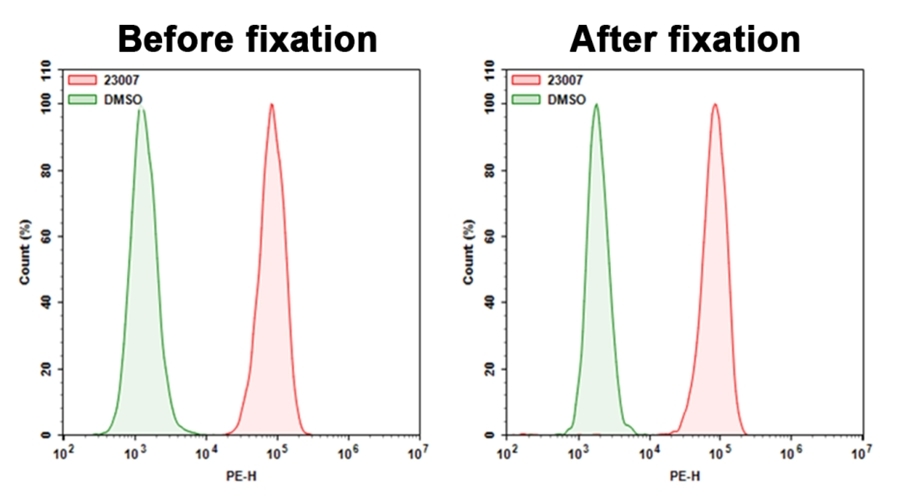Cell Meter™ Cellular Senescence Activity Assay Kit
Red Fluorescence
Cellular Senescence is an irreversible growth arrest triggered in order to prevent growth in DNA damaged cells. Senescence-associated beta-galactosidase is highly overexpressed in senescent cells and has been widely used as a senescence marker. The colorimetric X-gal staining method is widely used to detect SA-beta-gal in senescent cells. However, the color method has some limitations such as the requirement of fixation of cells (due to the low cell permeability of X-gal), longer staining time and low sensitivity. Cell Meter™ Cellular Senescence Activity Assay Kit uses Xite™ Red beta-D-galactopyranoside, a fluorogenic beta-Gal substrate that readily enters into live cells, and gets cleaved by beta-galactosidase inside cells, generating strong red fluorescence. Unlike cell-impermeable X-Gal substrate, it has excellent cell permeability. The robust Cell Meter™ Cellular Senescence Activity Assay Kit enables users to detect the senescence with higher sensitivity. Xite™ Red beta-D-galactopyranoside is fixable for further cell analysis if desired. The red fluorescence of Xite™ Red can be readily combined with other color fluorescent probes such as DAPI or GFP. The Xite Red product is well retained inside cells, producing a stable signal for fluorescence imaging and flow cytometry analysis.


| Catalog | Size | Price | Quantity |
|---|---|---|---|
| 23007 | 100 Tests | Price |
Spectral properties
| Excitation (nm) | 544 |
| Emission (nm) | 567 |
Storage, safety and handling
| H-phrase | H303, H313, H333 |
| Hazard symbol | XN |
| Intended use | Research Use Only (RUO) |
| R-phrase | R20, R21, R22 |
| UNSPSC | 12171501 |
Instrument settings
| Flow cytometer | |
| Excitation | 488 nm laser |
| Emission | 575/26 nm filter |
| Instrument specification(s) | PE channel |
| Fluorescence microscope | |
| Excitation | Cy3/TRITC filter set |
| Emission | Cy3/TRITC filter set |
| Recommended plate | Black wall/clear bottom |
Contact us
| Telephone | |
| Fax | |
| sales@aatbio.com | |
| International | See distributors |
| Bulk request | Inquire |
| Custom size | Inquire |
| Technical Support | Contact us |
| Request quotation | Request |
| Purchase order | Send to sales@aatbio.com |
| Shipping | Standard overnight for United States, inquire for international |
Page updated on December 13, 2025

